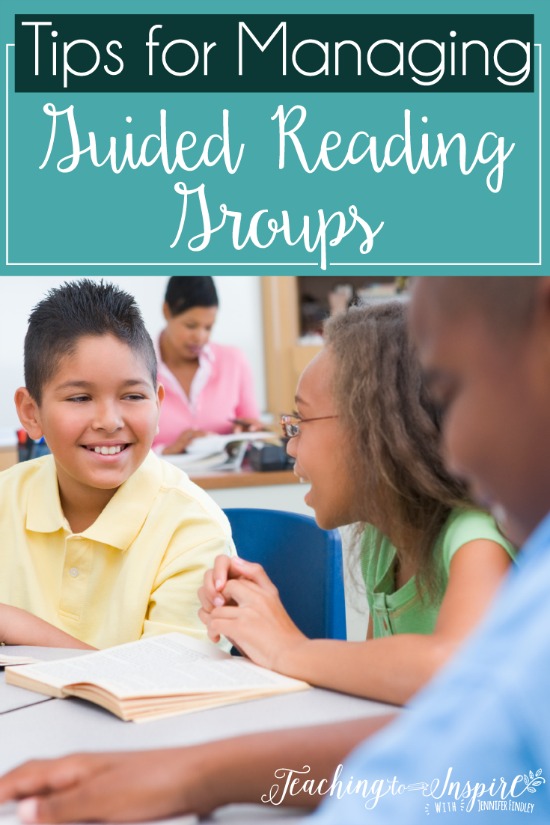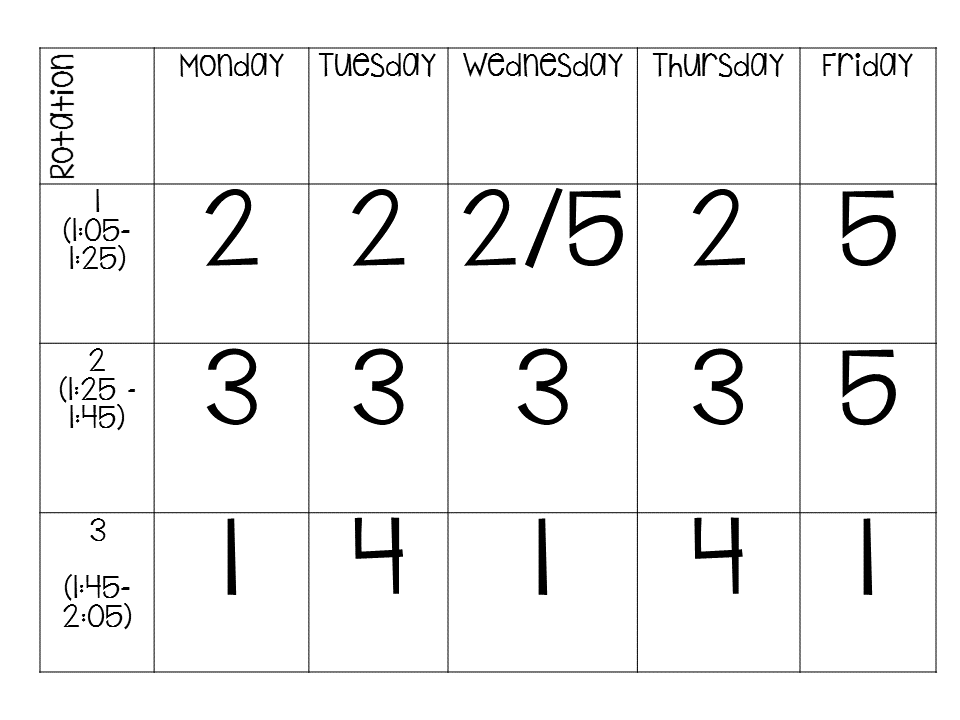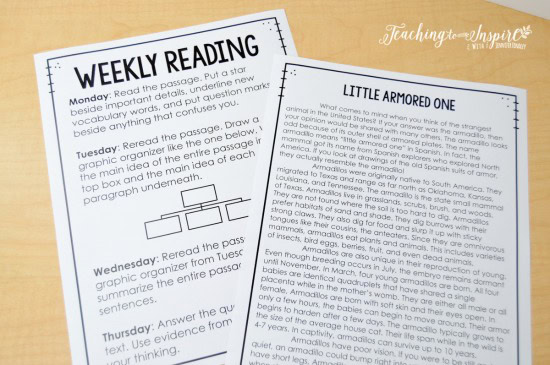Small group reading is my favorite part of the day, but it wasn’t always. During my first two years of teaching I struggled with wrangling my students once they came to me and keeping them on task and focused on reading. Because my small group reading time is super precious to me, I had to quickly come up with some strategies to better manage my groups.
In this post I am sharing some of those small group reading management tips that will help keep your groups focused, managed, and running smoothly.

Create a schedule for rotations and post it for the students to see (especially if it not consistent).
Here is an example of one of my small group reading schedules one year. I had this in my reading binder (speaking of small group reading binders, click here to grab all the printable forms I use) and I had it posted for the students.

- Group 3 was my lowest leveled group so I met with them four days a week
- Group 2 was my second lowest level so I met with them four days as well (with one day split with another group)
- Groups 1 and 4 were on-grade level groups with group 1 being a group that needed more support,
- Group 5 was my most advanced readers. We met longer on Friday and I also assigned their reading for the next week. On Wednesday, I did a quick check-in with them.
Have clear procedures for materials.
Think about what you will have your students bring to the table, where they will put it once they get to your table, and what, if anything, they need to get from your area and set out. My students bring the book they are independently reading, their reader’s notebook, and a pencil. They will also bring their small group reading text if they were given an independent assignment. When they arrive at the table, one student gets the group basket of materials and sits it out.
Assign seats, if needed.
You may want to consider assigning seats at your table, not just for behavior, but also productive talk. I try to strategically assign my students with “turn and talk” I know they will discuss the book with well. I also like to mix it up, so they are talking with a variety of students throughout the year.
Have extra pencils or specific guided reading pencils.
I am just going to go ahead and say it:
Don’t fight it!
Your small group reading time is precious and if you are having the students responding to the text, they will need pencils. I recommend having specific pencils so you can make sure you get them back. I actually use golf pencils (with no erasers) as my “I need a pencil” backup.
I will say that I rarely have a student come to me without a pencil because they are using them during independent reading, but it does happen. If you feel very strongly about the students being responsible enough to bring a pencil, issue a small consequence (lose a group point for example) but still immediately give them a pencil.
To read more about the materials I use for small group reading instruction, click here.
Have a designated bin, container, or even folder for each group.
This will keep you organized and will save you time having to locate and find the materials for each group.
Have a “Complete Right Away” Task
The best thing you can do for your management is to have a task in place for your students to complete immediately when they get to your table. This gives you time to get materials ready or check in quickly with any students working independently who may need redirection. This also gives you time to do an independent reading conference before beginning your group.
In my classroom, I keep this very simple. I have my students bring their independent reading book with them and they continue reading while they are waiting for the group to start.
Another option is to work on fluency with a common text. Many teachers use my weekly reading review for guided reading. My weekly reading review is a good fit a “complete right away” task because each set contains one passage with daily reading activities for the same passage. So the students would read the same passage each day but complete a different task with it. To save time, the students could only respond verbally to the tasks, versus in writing.
To see my weekly reading review, click here for the 4th and 5th grade set and here for the 3rd grade set.
Assign a focus for reading to keep them engaged and accountable.
Before I give the go-ahead to begin reading the assigned pages or text, I always give my students a focus for their reading. It could be as simple as finding the answer to a question we had after a previous reading or checking if a prediction was correct. It could also be more advanced such as determining how the character’s motivations affect their actions or finding evidence to support the theme of the book.
Have something for the group to do when they are done with the assigned reading.
For me, this varies depending on the text we are reading and the level of the students. My typical go-tos are: reread for fluency (shorter texts) or a written response (usually responding to a focus question or it can be just the students writing some discussion points down).
Implement partner discussion with larger groups (6 or more) to ensure all students talk about the book.
As I mentioned above, I have my students assigned seats for turn and talk. I know in a small group this may be necessary, but I ike to use this strategy 2-3 times per reading group session, regardless of group size. This ensures that all of my students are having the chance to share their thoughts and they are all hearing someone else’s thoughts. It is also a great time for them to practice talking about texts and listening to a partner talk about a text.
Set expectations for what to do when the group is interrupted.
This is pretty self-explanatory but have a procedure in place for when you or your group is interrupted. It always seems like my phone rings during guided reading time with some message from the office. When this happens, my students know to read independently if I don’t immediately give them a task.
Have a procedure in place for student sharing and answering, if necessary.
While I love having a free student discussion at the table, there are times when some students will dominate the discussion and some students will gladly let them. Having partner talk in place greatly helps ensure all students are sharing and discussing.
Another strategy I do is called “thumbs on the table to answer.” I don’t do this for every question because I do want free discussion but some questions I will say thumbs on the table when you have your answer. This ensures all students are accountable and then I can call on whoever has not shared as much. This strategy also sets the expectation that all the students have a response ready, whether they share their answers or not.
Record on your plans (or a notepad) where you left off.
This tip is mainly for teachers who have plans done a week in advance. If you do this, make a note where you left off of your plans if you did not finish a day. You can also check the day if you completed everything you had planned. This helps keep you organized, especially if you have multiple groups that you don’t meet with daily.
Which of these guided reading management tips do you already use? What new ones do you have to share with us? Let us know in the comments.









Jennifer,
Thank you so much for the organizational post and all of the forms. I really appreciate that! One thing I do for my guided reading table is to put one of those long and skinny pencil baskets at each student spot at the guided reading table. It contains a pencil, colored highlighters for close reading, and a dry erase marker. This helps me save time by not passing out materials or having students forget to bring their when I call the group.
Yes, I did that one year. And then I moved schools and completely forgot about it! Thanks for sharing!
Jennifer, we are just starting Guided Reading Groups (officially) this year, and I was very nervous as to how to do that with my 5th graders. You are a God-send! I have read everything (I think) that you’ve written on GRGs, and I am sure I will read it all again at least one time before school starts. Thank you so much for all the time and effort you have put into this website. My new go-to present wish-list is money to spend on Jennifer Findley’s site. I have taught now for 18 years, but when I grow up I want to be JUST LIKE YOU! Have a wonderful year, and I know, with your help, I will too!